In 1992, Staff Target (Land) 4061, more commonly known as TRACER, Tactical Reconnaissance Armoured Combat Equipment Requirement was to be the new CVR(T) replacement.
Before TRACER, FFLAV
Preceding TRACER was the 1988 Future Family of Light Armoured Vehicles (FFLAV), and before that, the Family of Light Armoured Vehicles (FLAV).
None of these progressed, but did inform three significant programmes, MRAV (that eventually became Boxer, TRACER, and the Future Command and Liaison Vehicle, that was fulfilled by Panther)
FFLAV was cancelled in 1994.
TRACER Emerges
The cancellation of FFLAV and the TRACER requirement overlap by a couple of years, but both they, and the 1991 Gulf War, reinforced the need for a larger formation reconnaissance vehicle than CVR(T).
12 month Initial feasibility study contracts were placed with three groups in 1993.
- British Aerospace, Royal Ordnance, Alvis Vehicles and Computing Devices Corporation
- GEC-Marconi and GKN Defence
- Vickers Defence, Short Brothers, Siemens Plessey, General Dynamics, Continental Motors, Teledyne, Brown Engineering, Pilkington Optronics and Texas Instruments
GEC/GKN initially proposed Recce Warrior, building on some of their work on VERDI a year earlier.
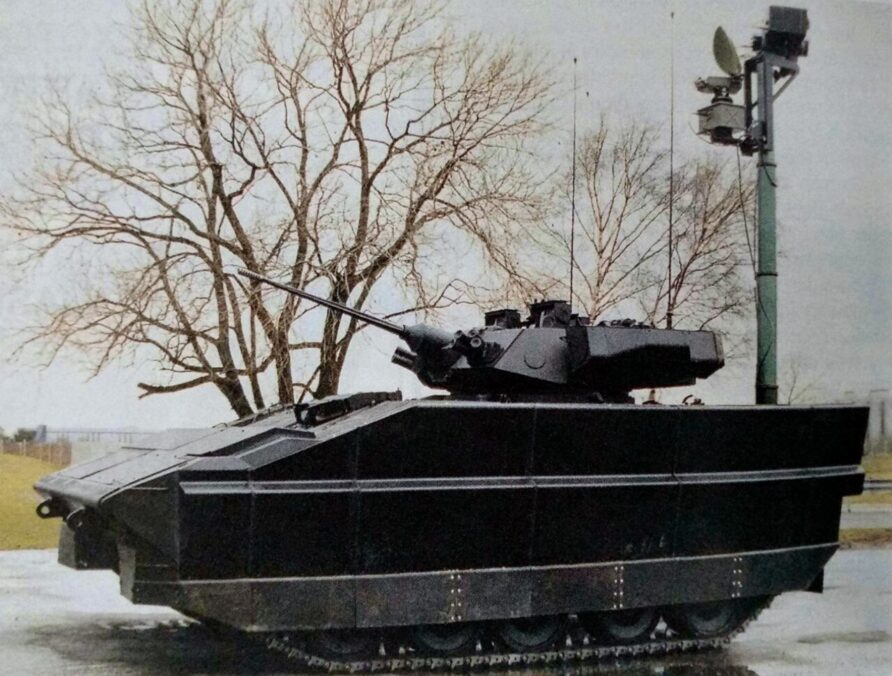
Modifying Challenger 2 Main Battle Tank hulls was also considered:
The possibility of modifying a number of existing or proposed armoured vehicles, including the Challenger 2 main battle tank was also considered. As it was estimated that the platform itself would only account for around 20 percent of the system cost, and there was a high risk of failure to meet the full requirement, this course was not assessed to be cost-effective.
Both Recce Warrior and a CR2 derived design would not be C-130 transportable, and were discounted by the MoD.
TRACER envisaged an in-service date of 2004, by then, CVR(T) would have been in service thirty years and the design, over 40 years old (give or take).
TRACER was intended to utilise the 45 mm CTWS, the two programmes closely linked.
BAE and Alvis also proposed a CV90 based design, much like their FFLAV proposal.
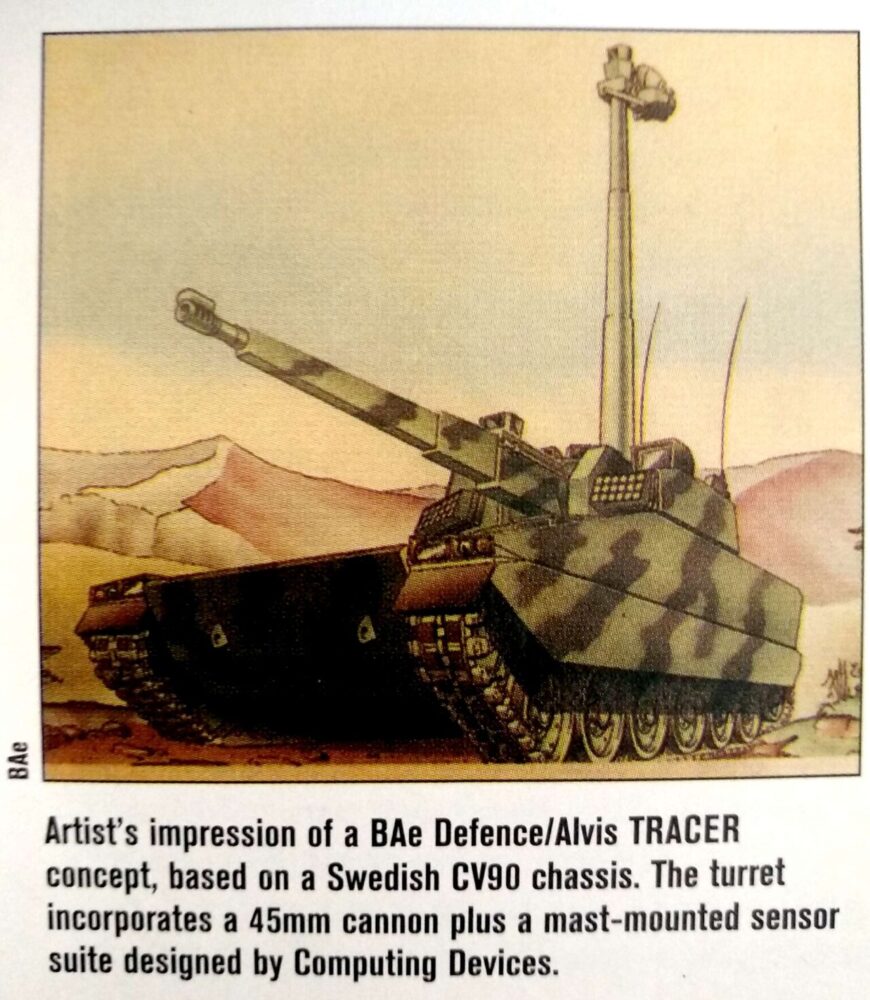
A model of this was also created of this, and the overwatch variant.
TRACER then went through a period of further concept development, exploring the role of crewed and uncrewed air systems in reconnaissance.
It is important to note that TRACER was placed in the Intelligence, Surveillance, Target Acquisition and Reconnaissance (ISTAR) tower) inside the MoD and, as we look back at what was happening with UAVs, we see that the Phoenix UAV system was then approaching a decision point.
Studies were seeking to balance the investment between land and air-based systems for ISTAR roles, but Phoenix was considered as an integral part of the ISTAR effort and would be entirely complementary with TRACER.
From a Select Committee submission
TRACER is the name given to the land-based component of the information, surveillance, target acquisition and reconnaissance.
ISTAR, capability required to meet the land commander’s critical information requirements. We are currently conducting a series of parallel studies into land-based and air-based manned and unmanned systems to help determine the optimum balance of investment into these complementary capabilities. No decisions have yet been made on the specification or numbers of each type of platform.
The original requirement for Tactical Reconnaissance Armoured Combat Equipment Requirement, TRACER, was a direct replacement for the ageing Combat Vehicle Reconnaissance (Tracked), CVR(T), vehicles to provide a high-resolution real-time information gathering capability at extended range in all conditions.
Since then, however, the development of unmanned air vehicle, UAV, technology promises to deliver a significant portion of the required capability without the risk to life associated with deploying troops far forward into enemy territory.
Operational analysis and military judgment show that manned reconnaissance is still required, however, and studies are currently planned into the sensors required to deliver the capability and the most appropriate platform, manned or unmanned, on which to deploy them.
Together with ASTOR and SENDER, TRACER was part of a fairly broad set of reconnaissance capabilities. SENDER (and SPECTATOR) were merged to form Watchkeeper.
BAE released another concept image of their proposed TRACER vehicle.
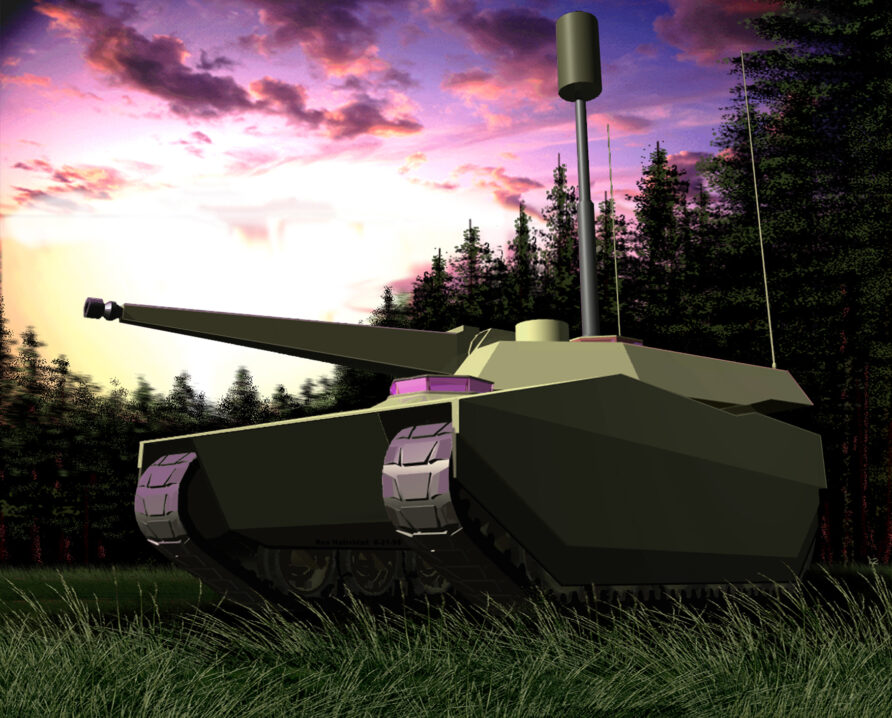
With TRACER concept work in progress, the British Army embarked on a vehicle rationalisation exercise that would see Saladin, Ferret, Fox, and Scorpion also withdrawn from service.
Because a number of Foxes and Scorpions were in good condition, it was decided to do some Frankenstein conversions and mate Scorpion hulls with Fox turrets.
Sabre was the result.
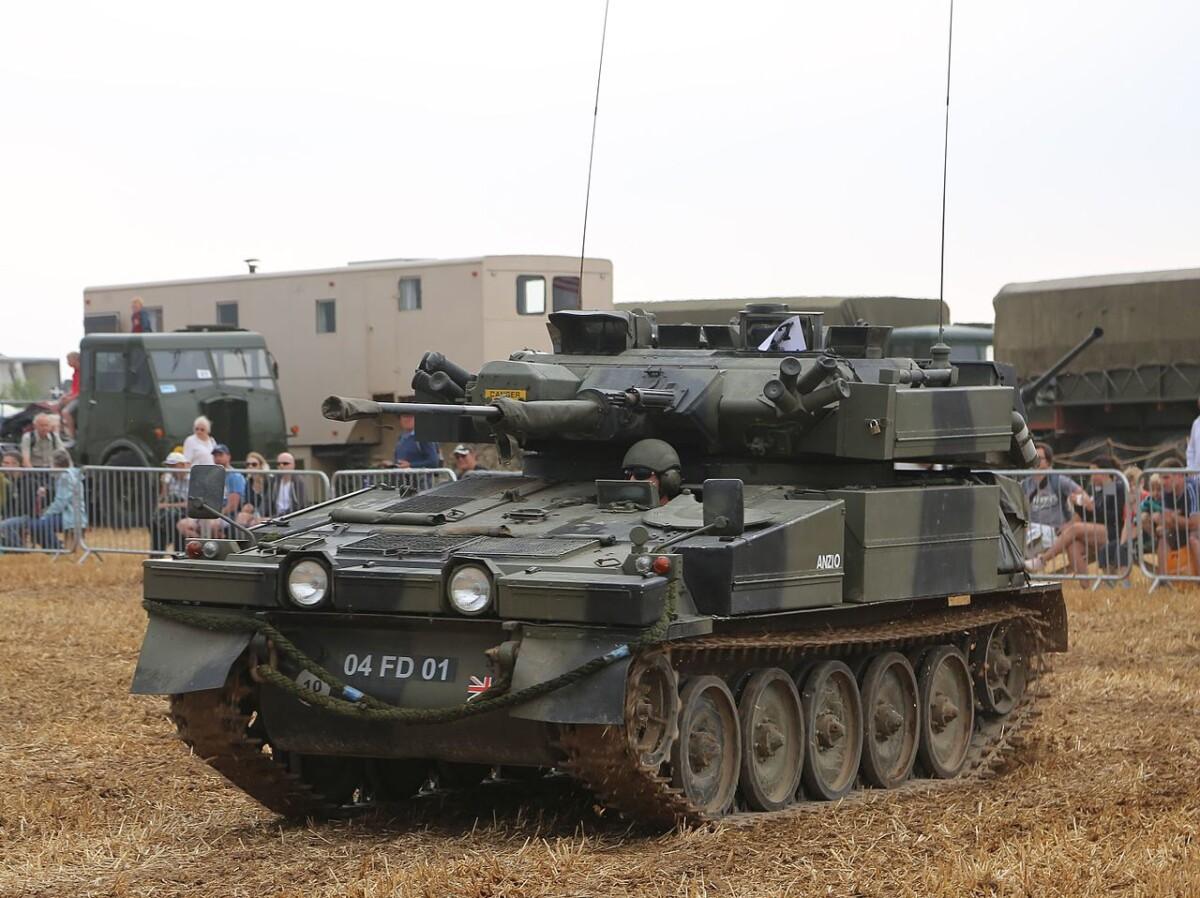
By the end of 1994 Sabre conversions had started at Base Ordnance Depot Donnington and by 1995 with 104 vehicles released to service, the programme closed.
The initial TRACER concept studies were set to conclude in 1994, but were extended into 1995.
Meanwhile, to enable CVR(T) to continue on until TRACER came into service, a Life Extension Programme (LEP) was initiated in 1995.
The CVR(T) LEP had three main elements.
The first was the replacement of the all Jaguar petrol engines with a diesel engine and upgraded TN15E transmission.
The second was the installation of additional secure radio equipment and a thermal imaging sight that, unlike the installed OTIS, would allow use on the move.
The third comprised of several minor improvements which were to include fitting a GPS, a new 30 mm APDS round and replacement of some electrical systems.
Future Scout Cavalry System (FSCS) and TRACER Merge
In the same post Gulf War period, the US Army also started looking at a replacement for its Bradley M3 in Cavalry squadrons, and the M1114 HMMWV ‘Humvee’ in scout platoons, in a programme called the Future Scout Cavalry System (FSCS).
In early 1996, after Armor Caucus l, Major General Lon Maggart initiated a programme to examine various options for the US Army’s future mounted scouting needs. The studies concluded that a dedicated vehicle would offer the best solution.
The principal vehicles employed in a scout role suffered from several deficiencies, and none were purpose-built.
The BFV had evolved as an infantry squad carrier to replace the Ml 13 Armored Personnel Carrier, and lacked the low silhouette considered desirable for reconnaissance and surveillance operations.
Both the HMMWV and the LAV-25 lacked sufficient mobility and protection against most forms of attack.
None of these platforms appeared viable amid emerging threat technologies
Requirements included:
- Mobility and speed exceeding other vehicles within the Maneuver Force
- Transportability by C-130, C-141, C-5, and C-17
- Helicopter transportability and parachute capability
- Swim capability
- Maximum crew of three
- Full digital connectivity
During regular discussions between the British and US Army, it was discovered that both were looking at similar requirements.
The TRACER and FSCS programmes were subsequently harmonised and a joint project created.
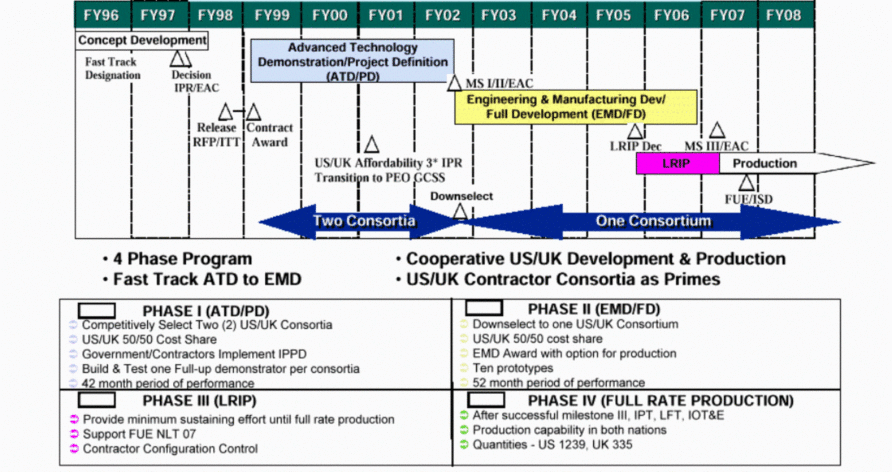
Both nations’ requirements would be met by a single vehicle, the Armoured Scout and Reconnaissance Vehicle (ASRV).
It is important to note, for the avoidance of confusion, that both programmes continued to be referred to, in their home nations, by their original titles: TRACER and FSCS. The intended end product of both programmes was the ASRV which, if successful, would be produced in both nations.
In 1997, the decision was made to move the CTAS calibre to 40 mm and rename it the CT2000.
The Armoured Scout and Reconnaissance Vehicle was specified in a Memorandum of Understanding signed by the US and UK in July 1998, the original Operational Requirements Document having been agreed in December 1997.
The headline requirement for the new vehicle required:
- Ability to detect targets at 10+ km
- Reduced visual, thermal, noise, and electronic signature
- Cross-country speed of 60mph (ca. 97 km/h)
- 400-mile range
- Ability to operate without resupply for 72 hours
- C-130 transportability
Although a common vehicle was envisaged, the British Army had an additional requirement for their variant to be equipped with a long-range anti-tank missile. This was intended to provide overwatch for vehicles deployed forward without protection from main battle tanks, the same role as CVR(T) Striker.
France and Germany both requested observer status on TRACER, although neither had a comparable requirement.
An Invitation to Tender (ITT) was issued on the 09th July 1998 for the Project Definition Phase to two competing consortia.
- SIKA International (British Aerospace, Lockheed Martin, Vickers Defence, Smiths Industries, Computing Devices Company, Pilkington Optronics, Shorts Missile Defence and General Dynamics)
- LANCER (Marconi, Alvis, United Defence and Raytheon). Each would be required to produce detailed specifications, training requirements, production plans/costs and an integrated demonstrator vehicle.
Both consortia were subsequently awarded a 42 month £90 million contract in January 1999.
Each was required to produce detailed specifications, training requirements, production plans/costs and an integrated demonstrator vehicle (see below)
The mix of UK and US companies was intended to facilitate an equal work share between the native industries of the two nations.
At this early stage, the UK, and US had slightly different requirements, but the project was still initiated amid hopes of a rapid introduction and reduction in costs. Both had slightly different industrial strategies involving joint ventures or loose teaming arrangements, but both governments were keen to main the competitive element whilst having an equitable mix of US and UK commercial opportunities.
The estimated UK requirement would be for 400 vehicles with the US taking 1,200, with a projected price estimate of $2.9m each.
The studies progressed well and planned to go through affordability review in early 2001, after which several subsequent options would be open for discussion, including completion and report in 2002.
Estimated cost at this point was £118 million at 1999 prices.
By the end of 1998, the MoD had spent £7.3 million on TRACER.
In February 2000, the estimated cost of the UK’s participation in TRACER was revised to £90 million, with costs split 3 ways between the UK, USA and competing consortia.
An affordability review was planned for early 2001 after which some other options were to be considered.
Cancellation
Rumours surfaced that the US was about to terminate the programme, and in the same month Mr Quentin Davies MP tabled a Parliamentary Question about the consequences of the US withdrawing. In response to the question, the estimated cost rose to £130 million, up from £118 million a couple of years before and £40m different from a parliamentary answer given only months before.
In April 2001, a statement to the House of Parliament revealed that the future of the US FSCS was in doubt, describing how the new Future Combat System (FCS) vision as envisioned by General Shinseki in 1999 would need funding and some programmes would be cut to make room for it, one of these was the follow-on engineering development phase of FSCS/TRACER.
TACTICAL RECONNAISSANCE ARMOURED COMBAT EQUIPMENT REQUIREMENT (TRACER)
An Intelligence, Surveillance, Target Acquisition and Reconnaissance (ISTAR) capability is crucial to the conduct of operations and a balanced, layered system of systems is key to providing a robust capability that will meet commanders’ information requirements in all weathers. TRACER is the name given to the land-based component of this ISTAR capability. No decisions have yet been made on the specification or numbers of TRACER platforms required. We are currently conducting a project definition (PD) study on TRACER in collaboration with the US, which, together with associated national studies (including those into the use of tactical Unmanned Air Vehicles (UAVs) in the reconnaissance role), will inform our future balance of investment decisions. Since our previous report to the Committee, the future UAV programmes, SENDER and SPECTATOR, have been combined into a single programme, WATCHKEEPER, which will also assess the future role of PHOENIX (the in-service UAV system). This memorandum deals principally with TRACER, but also outlines the current position on the UAV element of the wider land ISTAR programme.
OPERATIONAL REQUIREMENTS
1. The original requirement for TRACER was as a direct replacement for the Scimitar, Sabre, and Striker variants of the ageing Combat Vehicle Reconnaissance (Tracked) (CVR(T)) fleet, to provide a high resolution, near real-time information gathering capability at extended ranges in all conditions, and to carry out a number of other operational roles that reconnaissance forces are required to undertake. Since then, however, the rapid development of UAV technology has meant that these systems are likely to be able to deliver a significant portion of the ISTAR required capability, without the risk to life associated with deploying troops far forward into enemy territory. Operational analysis and military judgement show that manned reconnaissance is still required, however, and studies are currently being conducted into the sensors required to deliver the capability and the most appropriate platform, manned and unmanned, on which to deploy them. It is envisaged that the TRACER requirement will be met by the procurement of a family of three reconnaissance variants: a scout to fulfil the formation and close reconnaissance roles within formation reconnaissance regiments and armoured infantry battlegroups respectively; a variant equipped with a Long-Range Anti-Tank Guided Weapon (LRATGW) system to provide overwatch protection for vehicles deployed far forward without protection from other anti-armour assets; and a variant specially equipped for engineer reconnaissance.
2. In 1996 it emerged from discussions that the United Stated also had a requirement for a land-based, manned, armoured reconnaissance vehicle, known as the Future Scout and Cavalry System (FSCS). We decided, therefore, to participate in a joint project definition study to further define the TRACER/FSCS requirement and to provide the information necessary to inform the UK’s balance of investment decision. A UK/US Combined Operational Requirement Document (CORD) was agreed in December 1997. The joint programme covers only the scout variant. Since its armoured cavalry regiments are normally supported by main battle tanks, and their combat engineers are employed in a different manner, the US has no similar requirement for LRATGW and engineer variants and the UK is pursuing these on a national basis.
TRADE-OFFS
3. The principal trade-offs within the land tactical ISTAR are between a manned, land-based capability and an unmanned, air-based capability. We are currently conducting a series of parallel studies to help determine the optimum balance of investment into these complementary capabilities. Within TRACER, possible trade-offs will be studied in depth in the combined operational and technical analysis conducted as part of the joint PD study. An affordability review was conducted 24 months into the PD phase (in January 2001); this reviewed capability against cost and further refined the TRACER/FSCS requirement. The operational analysis has not prompted any significant changes to the harmonised CORD so far.
NUMBERS
4. No decision will be taken on the number of TRACER (or WATCHKEEPER) systems to be procured, pending the outcome of the balance of investment studies.
STRATEGIC DEFENCE REVIEW
5. The Strategic Defence Review emphasised the importance of ISTAR capabilities. For example, it saw the number of formation reconnaissance regiments in our order of battle increased from three to four. It confirmed the importance of a continued ability to conduct high intensity conflict, which TRACER and WATCHKEEPER will be capable of supporting.
MILITARY CAPABILITY
6. TRACER will have wide utility across the spectrum of conflict and will operate with a diverse set of force mixes, from light and airmobile formations through to heavy armour. It will be capable not only of providing intelligence, but also of acting as a deterrent, monitoring opposing forces, helping to maintain freedom of movement, and providing a credible offensive capability. TRACER will be able to engage enemy forces with direct fire weapons systems and to call on indirect fire systems and Close Air Support. It is planned that TRACER will be transportable by strategic transport aircraft (C-130). WATCHKEEPER would also be used in all phases of war and in situations other than war.
EQUIPMENT TO BE REPLACED AND IN -SERVICE DATE
7. The current land-based manned reconnaissance capability is provided by the Scimitar, Striker and Sabre variants of the CVR(T) fleet. The CVR(T) was introduced in 1972 and proved to be inadequate during the Gulf conflict, particularly in the areas of sensors, stealth, survivability, mobility and lethality. CVR(T) is undergoing a life extension programme, which will make limited improvements to its sensors, mobility, and sustainability, but the basic platform is inadequate and it would not be cost-effective to upgrade it to meet the requirements of the modern battlefield. The out-of-service date for all variants of the CVR(T) family of vehicles is about 2015. An ISD will only be confirmed for TRACER when the major investment decision is taken at the project’s Main Gate ***.
ACQUISITION APPROACH
8. TRACER was conceived as a national development programme. The initial feasibility study for TRACER, jointly funded by the MoD and industry, was conducted by three UK industrial consortia and reported in 1994. A further cost and risk study allowed the consortia to propose concepts and prices, address areas of risk, and consider candidate technologies for integration into the production system. As the cost and risk study neared completion in 1996, it became clear that the US had a similar requirement. The UK and US decided, therefore, to collaborate on Project Definition (PD) studies and subsequently signed an “umbrella” Memorandum of Understanding in July 1998. An invitation to tender for two firm-price PD contracts was issued to two consortia on 9 July 1998 and contract proposals were received in October that year. Following successful evaluation of the proposals, the contracts were awarded on 29 January 1999. The limited competition meant that “no acceptable price, no contract” procedures were applied. The current PD phase will be of 42 months duration (to July 2002) and will focus on candidate technologies and their integration into the most cost-and operationally-effective system design. Each consortium is to produce a detailed specification for Full Development and Initial Production in accordance with the agreed pricing strategy; an assessment of training requirements; a range of demonstrators, including an integrated demonstrator vehicle; a risk management plan, supported by an updated risk register; a software integration plan; a trials and acceptance plan; a project management plan; a quality plan; a safety plan; and an integrated logistic support plan.
9. Two UK/US industrial consortia have formed to participate in the TRACER PD phase. SIKA International is a joint venture company formed by BAe Systems and Lockheed Martin, and includes Vickers Defence Systems and General Dynamics Land Systems as principal sub-contractors. LANCER is a consortium headed by BAe Systems (at the time of contract signature Marconi Electronic Systems) acting as prime contractor, with Alvis Vehicles, United Defense LP, and Raytheon. The merger of British Aerospace and Marconi Electronic Systems has presented challenges to the programme, but the undertakings have required BAe Systems to put in place a series of “firewalls” to ensure that effective competition continues.
10. The “umbrella” Memorandum of Understanding with the US covers all phases of the programme through to Manufacture and In-Service Support, but recognises that formal commitment of both nations is limited to the current phase of work. The procurement strategy for future phases of the TRACER programme will be defined in the Main Gate submission, which is expected to be in early 2003.
11. As a result of the parallel work on tactical UAVs, contracts with four consortia for the first part of the WATCHKEEPER Assessment Phase were let in September 2000.
ALTERNATIVE ACQUISITION OPTIONS
12. Alternatives to the development of a new vehicle were considered in 1992 and again in 1997. A market survey of off-the-shelf options revealed that no commercially available solutions to the requirement existed, or would be likely to exist in the relevant timescale. The possibility of modifying a number of existing or proposed armoured vehicles, including the Challenger 2 main battle tank, was also considered. As it was estimated that the platform itself would only account for around 20 per cent of the system cost, there were high integration risks, and there was a high risk of failing to meet the full requirement this option was not assessed to be cost-effective. This assumption has been borne out by the current operational analysis being conducted as part of the TRACER programme. Modified in-service systems and upgrades to commercial off-the-shelf solutions fail to achieve the necessary level of performance and the whole-life costs for systems capable of being sustained to the planned out of service date for TRACER are higher than those for a bespoke solution. Under the contracts let for the first part of the WATCHKEEPER Assessment Phase, industry has been asked to advise on procurement options.
COLLABORATION
13. It is assessed that there is currently no opportunity for a European collaborative programme on TRACER, owing to different national doctrine concerning the use of reconnaissance forces and the force mixes that are employed.
COLLABORATION WITH THE US
14. The TRACER project is directed by a UK/US Steering Committee and administered by a Joint Project Office (JPO). The UK has assumed the lead of the JPO for PD, and was responsible for placing the contracts on behalf of both nations. The JPO is led from the Defence Procurement Agency’s office at Bristol. It has a permanent staff of about 35 military and civilian personnel, covering a wide range of disciplines, and can also call on the expertise of the Defence Evaluation and Research Agency. The estimated cost of the UK office for the PD phase is some £2 million a year (in addition, some £2 million a year is spent on support from DERA). A satellite project office, funded by the US, has been set up at the US Army’s Tank Automotive and Armaments Command in Warren, Michigan. All decisions relating to the progress of the programme must be agreed jointly.
15. The MoU commits both the US and UK to an equal cost share during PD and Full Development, although if the collaborative project continues into the next acquisition phase the latter would be the subject of further national approvals. Supplements to the MoU, taking account of national off-take, would be negotiated for the production phase if it were decided to proceed with production. There is no formal commitment by either nation beyond the current PD stage. The next stage would be the award of a single contract for Engineering and Manufacture (the US equivalent of our demonstration phase) to the successful consortium. However, US commitment to the future phases is now in considerable doubt. This uncertainty dates back to 1999, when the US Chief of Staff of the Army, General Shinseki, announced his vision for a lighter-weight, more readily deployable Army. Central to his vision is the development of a new family of vehicles known as the Future Combat System (FCS). In order to make financial headroom for this new strategy, during 2000 the US Congress deleted the funding for a number of equipment projects. Among those affected is the follow-on Engineering and Manufacture Development for FSCS/TRACER. The US intends to make a decision on the way forward for the FCS programme in April 2003, which may include the use of FSCS as a low-risk route towards meeting part of the FCS requirement. In the light of this uncertainty over the future of the collaborative programme, the UK MoD is developing a strategy for a national solution to the TRACER requirement, whilst at the same time keeping open the collaborative option. We are also studying our future armoured vehicle programmes to determine whether we have a similar requirement for a lighter-weight family of vehicles that could improve our ability to achieve rapid effect in a crisis through improved strategic mobility.
EXPORT POTENTIAL
16. The market potential for TRACER and WATCHKEEPER cannot yet be assessed.
INDUSTRIAL FACTORS
17. Collaboration has provided an opportunity for UK companies to forge links and share technical expertise with US companies. The TRACER/FSCS MoU sets a goal of equitable work-share, which is reflected in the balance of the industrial consortia. The two industrial consortia participating in Project Definition were the only industrial groupings to come forward after briefings on the collaborative programme.
SMART ACQUISITION
18. The TRACER programme embraces several Smart Acquisition features. Greater emphasis is being placed on risk reduction during PD. The JPO is liaising closely with all stakeholders, including industry, to reduce timescales and achieve a better understanding of a complex programme. The benefits of this approach were realised early in the programme in the evaluation of tenders for the PD phase—a process which would traditionally have taken six to eight months was completed in four. Increased emphasis is being placed on through-life costs, with challenging but achievable targets for reliability and in-service availability. The TRACER Integrated Project Team (IPT) was formed in January 2000. A similar approach is being adopted for WATCHKEEPER. The Tactical UAV IPT was formed in February 2000.
MILESTONES AND COSTS
19. The PD phase is due to be complete by mid-2002. The next steps will be determined in the light of the outcome of work on the way forward for the TRACER programme (see paragraph 15).
20. A reliable estimate of the total cost of the project is not possible in advance of decisions on the balance of investment between TRACER and WATCHKEEPER. Some £10 million was spent by the UK on the Feasibility Study phase. The UK costs for TRACER PD are £121 million at outturn prices. As already indicated, there is no commitment for either nation to proceed beyond the current phase. An overall upper limit has been set in the forward equipment programme funding for TRACER and WATCHKEEPER. This provision has not been split between the programmes beyond the current phases. It is planned to spend about £15 million in total on the first part of the WATCHKEEPER Assessment Phase.
IN -SERVICE SUPPORT
21. During TRACER PD, contractors will deliver costed options for contractor logistic support for the first two years in service, the following five years, and subsequent periods. Options may include direct supply of spares to the field force and Public/Private Partnership type arrangements for major spares components, as well as contractor-provided maintenance support. A Training Needs Analysis will also be undertaken during PD.
FRONT LINE, STORAGE AND RESERVES
22. The number of each variant of TRACER that will be required will be determined during the balance of investment considerations in 2002.
INTEROPERABILITY
23. The PD phase will cover TRACER’s compatibility, interoperability and commonality with other systems. Assuming that the collaborative procurement of TRACER/FSCS continues, there will be a high level of interoperability and commonality with US reconnaissance forces.
DISPOSAL OF EQUIPMENT TO BE REPLACED
24. CVR(T) will have been in service for over 40 years when it is replaced. Options for disposal are likely to be limited. The future of the PHOENIX system is one of the issues to be considered in the WATCHKEEPER Assessment Phase.
IN SERVICE LIFE AND FURTHER DEVELOPMENT
25. It is anticipated that TRACER will remain in service for a long period of time. For TRACER, the consortia have been instructed to prepare to carry out through life improvements to the system in order to fulfil emerging capability gaps and to capture the advantages of novel technology. Such an approach will add to the useful life of the system.
April 2001
At the DSEi show in London in September 2001, a SIKA representative said:
Rumours that the project had stalled completely and was about to be overtaken by FRES are grossly overdone, the project continues to meet its milestone development phases, and we have already started cutting metal on the first prototype.
In October 2001, a statement was made to Parliament that in a joint US/UK decision, TRACER would come to a close at the end of the assessment phase in July 2002.
The first Hansard entry for FRES was on the 26th October 2001.
Mr Desmond Swayne (New Forest West, Conservative)
To ask the Secretary of State for Defence
(1) if he will identify the components which make up the Future Rapid Effects System
(2) if he will make a statement on the Army’s future light armoured capability.
Dr Lewis Moonie (Parliamentary Under-Secretary, Ministry of Defence; Kirkcaldy, Labour/Co-operative)
The Army’s light-armoured vehicle capability will be provided within the Future Rapid Effects System (FRES). The exact components of FRES have yet to be decided, but it is likely to include such platforms as an armoured personnel carrier, guided weapons platform, command vehicle, reconnaissance platform, ambulance and repair and recovery vehicle. FRES will draw heavily on a number of technologies developed through the TRACER programme.
The information gained would be used to inform FCS and FRES respectively, both programmes were to effectively absorb TRACER and FSCS:
Mr. Swayne:
To ask the Secretary of State for Defence if he will make a statement on the future of the Tracer programme.
Dr. Moonie:
The UK and the US have taken a joint decision to bring the Tracer programme to a close in July 2002 when the current assessment phase comes to an end. In keeping with the principles of Smart Acquisition, this illustrates our willingness to take the right decision early in a programme in response to changing priorities. The Tracer programme has successfully developed a pool of key technologies that can now be utilised in future programmes such as the Future Rapid Effects System which will play a key role in meeting the Land Commander’s Intelligence, Surveillance, Target Acquisition and Reconnaissance needs.
TRACER and FSCS were no more, although the development programme would see out its contracted funding and allow the consortia to show the fruits of their considerable labours.
Total cost to the UK was confirmed at £131 million
With the US gone, the UK had a choice, it could well have stayed with the programme and remarks about it being unaffordable without US participation are only partly true, but before it had chance to complete, the UK was already in love with its version of FCS, The Future Rapid Effects System (FRES).
TRACER technology demonstrations took place towards the end of the programme in June and July 2002 involving the prototype vehicles from each consortium, despite its cancellation.
And that was the end of TRACER.
Before reading on, would you mind if I brought this to your attention?
Think Defence is a hobby, a serious hobby, but a hobby nonetheless.
I want to avoid charging for content, but hosting fees, software subscriptions and other services add up, so to help me keep the show on the road, I ask that you support the site in any way you can. It is hugely appreciated.
Advertising
You might see Google adverts depending on where you are on the site, please click one if it interests you. I know they can be annoying, but they are the one thing that returns the most.
Make a Donation
Donations can be made at a third-party site called Ko_fi.

Think Defence Merch
Everything from a Brimstone sticker to a Bailey Bridge duvet cover, pop over to the Think Defence Merchandise Store at Red Bubble.
Some might be marked as ‘mature content’ because it is a firearm!
Affiliate Links
Amazon and the occasional product link might appear in the content, you know the drill, I get a small cut if you go on to make a purchase
Technology Demonstrators
Both demonstrator vehicles were the culmination of a great deal of detailed analysis and study, make no mistake, both the US and UK put a lot of time and effort into the TRACER/FSCS requirement before building the demonstrators.
The Combined Analysis Plan (CAP), for example, consisted of 21 individual study areas and these were closely integrated with current thinking on unmanned aerial vehicles.
This analysis extended to asking questions about UAV survivability and operability in poor weather, sensor fidelity in falling snow, the impacts of operating in hot and high environments, integration with stand-off weapons, the optimal height for the sensor mast, and of course, wheels or tracks.
Mobility favours tracks
The mobility analysis considered terrain using the CVR(T), Bradley, High Mobility Multipurpose Wheeled Vehicle (HMMWV), LAV III and MTVL vehicles for comparison.
It concluded that strategic mobility was equal for both, that tracks favoured off-road mobility and survivability, whilst wheels favoured tactical mobility on hard surfaces and fuel consumption (although only slightly).
In favourable terrain, a wheeled vehicle performed better but as soon as the terrain became less favourable their speed advantage was lost and time spent navigating around unpassable terrain meant that it both spent more time exposed to enemy observation and fire, and less time doing its main job.
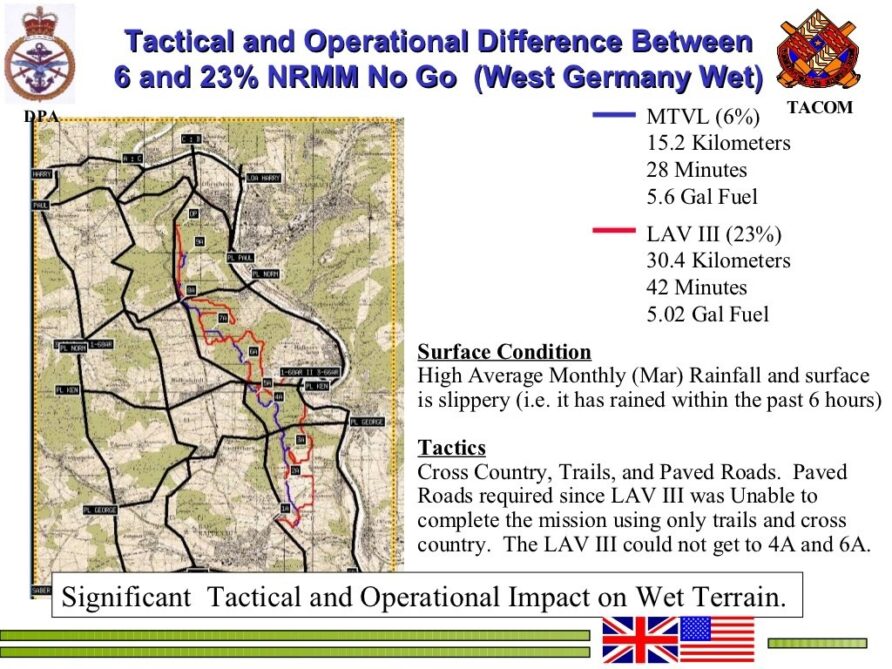
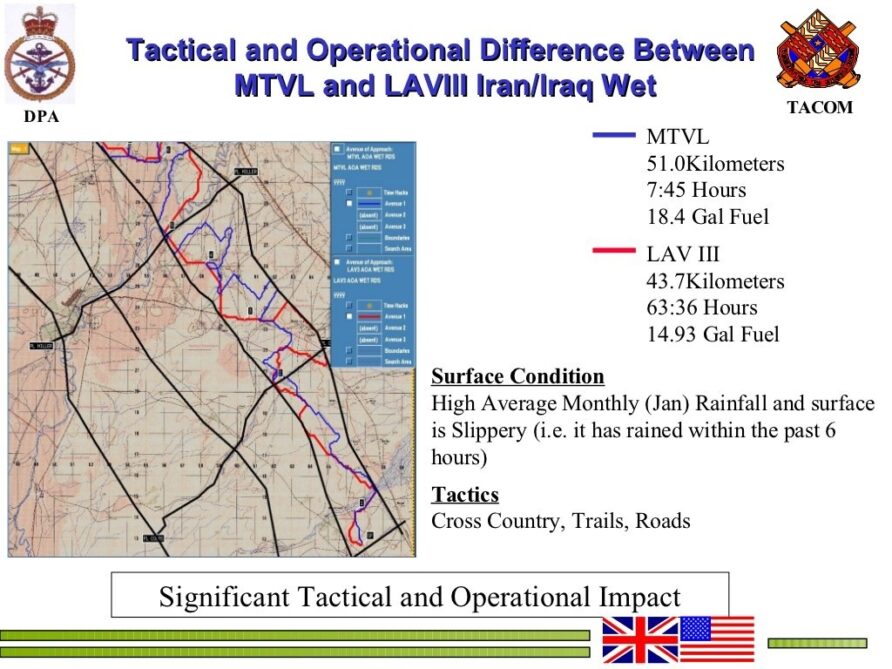
A tracked vehicle configuration was selected.
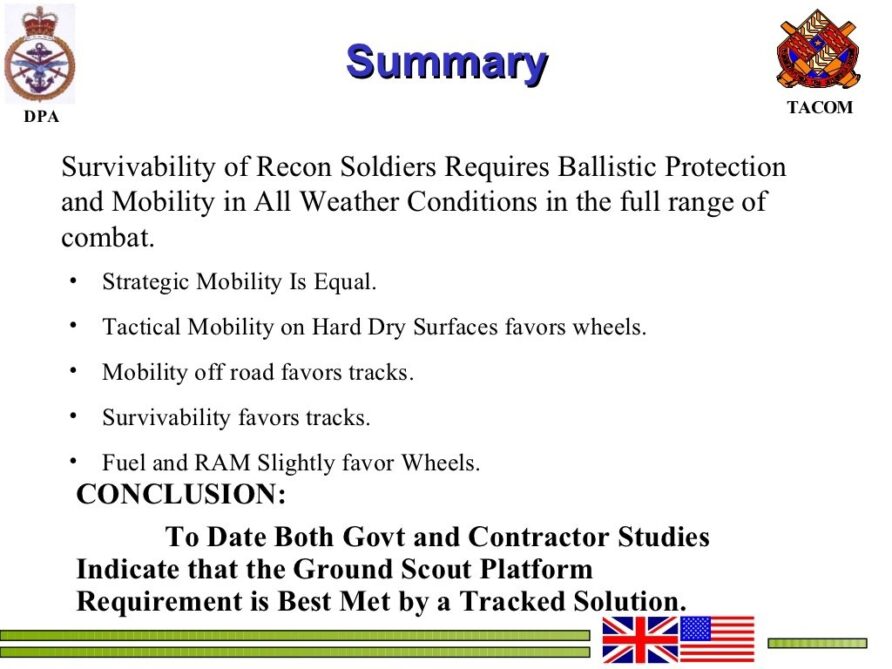
Elevating Mast
An elevating mast was assessed as providing significant survivability benefits.
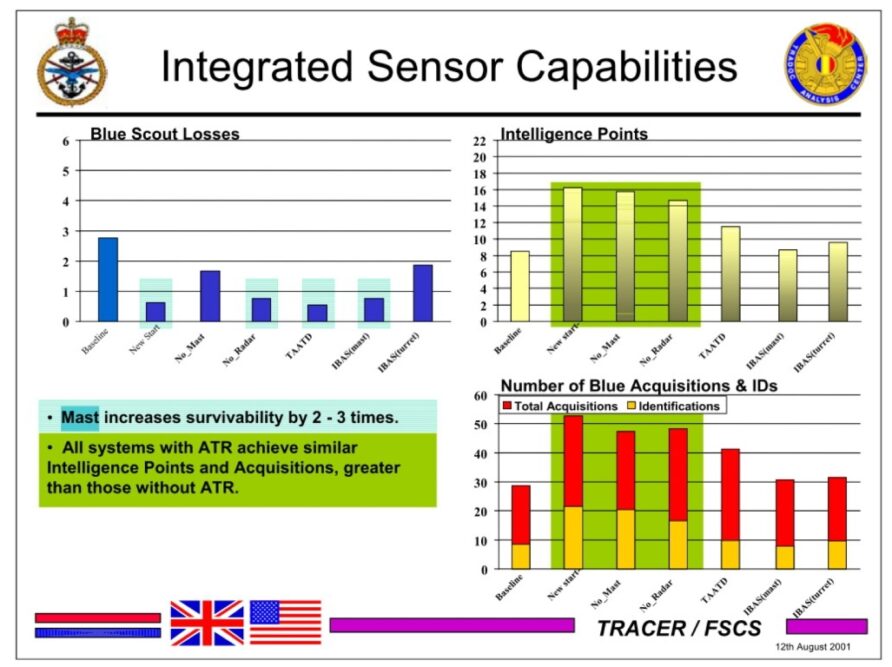
40 mm CTAS assessed as the optimal solution
The 40 mm Cased Telescopic Ammunition (CTA) cannon from CTAI provided the main armament
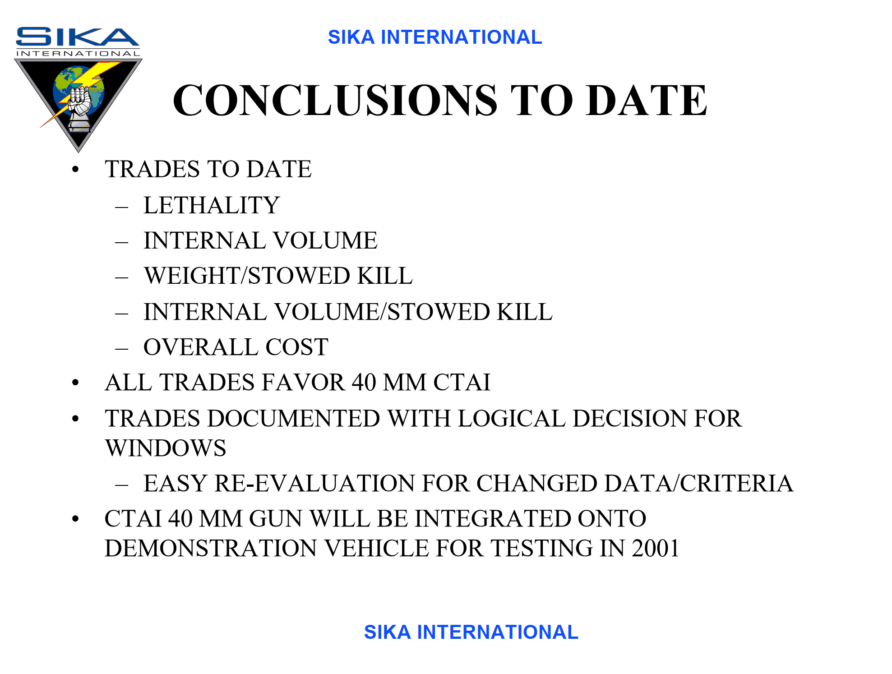
Overwatch
The UK element of TRACER also included a requirement for a Striker replacement.
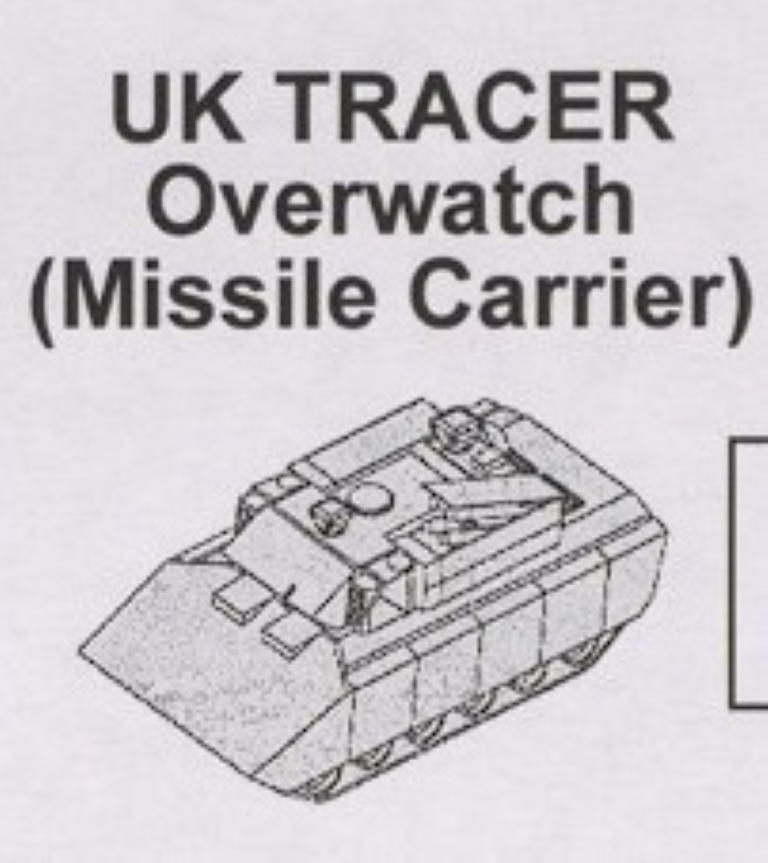
The LANCER consortium included GEC Marconi, and naturally, they proposed Brimstone for the role, replacing the Swingfire missile.
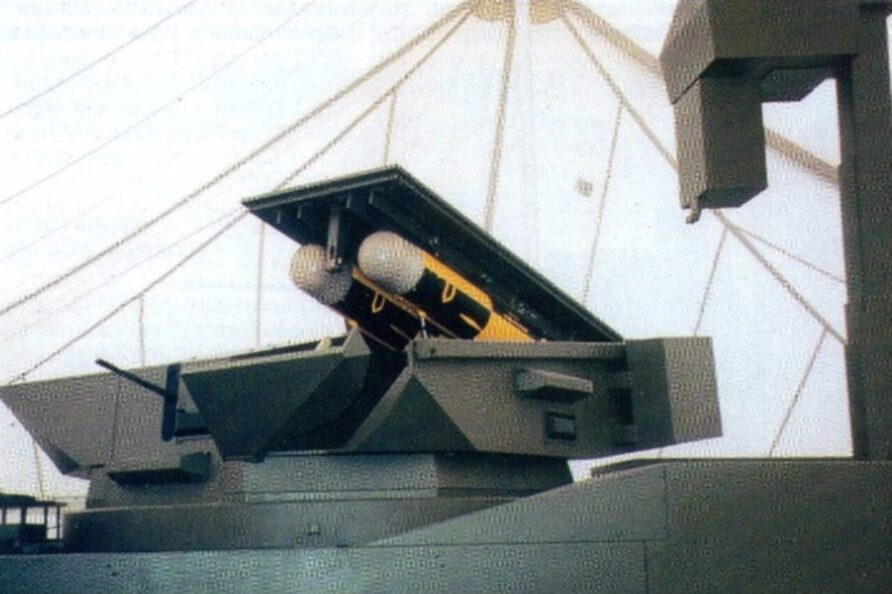
Four were carried in a turret that also had a 7.62 mm automatic weapon for local defence.
Human Factors
Human factors were another area of significant research and modelling for both, especially when looking at the issues of uncrewed turrets, a single crew pod and 3-person crews.
A single crew pod allowed protection to be concentrated and, thus, dimensions reduced, and overall weight lowered.
Workload reduction and ensuring the tidal wave of data from the extensive sensor systems did not overwhelm the crew to the point of ineffectiveness were considered. Duplication of workstation functionality allowed, in a difficult situation, the vehicle commander to drive or driver to fire the weapon.
The multi-function displays in the SIKA demonstrator were designed and built by BAE Avionics, a first at the time.
An escape hatch and another escape route through to the rear of the vehicle were provided.
Even surround sound technologies were used to present realistic external audio to the crew; that is how smart they were
Sensors
The most advanced part of the vehicles were their sensor systems.
In addition to individually integrated periscopes for each of the crew and commander/gunner sights, both main sensor systems were mounted on an elevating mast that allowed the vehicle to remain in dead ground or behind cover.
The sensor package comprised laser rangefinder/designator, acoustic, thermal, day/night and radar, all fused by the combat management system, one cross-cuing from the other as needed.
The Sika vehicle had the Wide Area Surveillance (WAS), Automatic Target Detection (ATD) and Aided Target Recognition (ATR) demonstrated on the VERDI-2 Warrior. It’s high-speed FireWire data bus made those on CVR(T) and the M3 look steam driven.
Semi-disposable Micro Air Vehicles (MAV) were also allowed for, although not integrated on the demonstrators.
Inertial Navigation, GPS, NBC protection, fire detection/suppression and various communication systems completed the package.
LANCER Demonstrator
The LANCER Team rolled out the Future Mobility Platform (FMP) chassis for the TRACER/FSCS vehicle from United Defense, LP’s engineering centre in Santa Clara, California on February 11th, 2002.
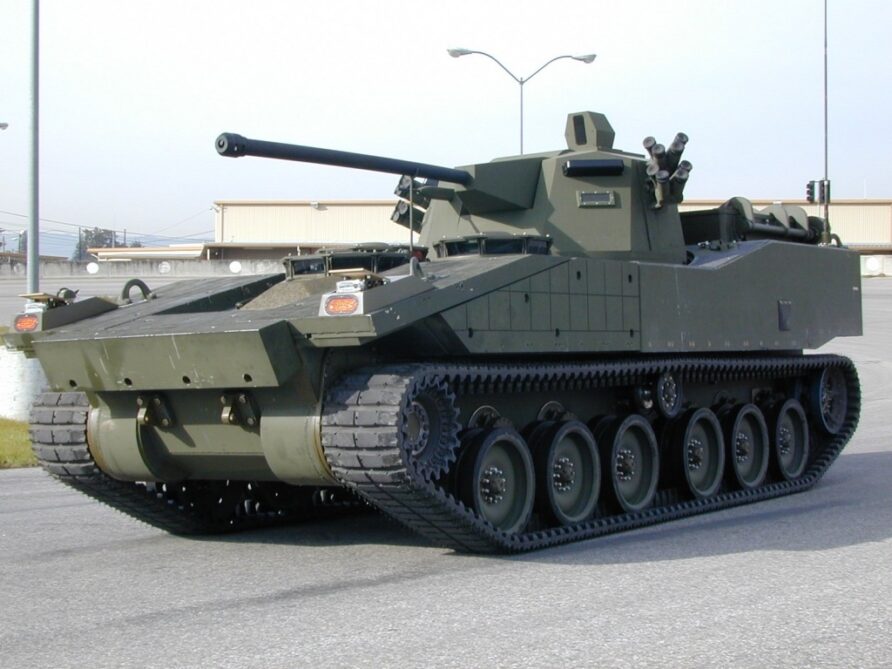
The FMP included a hybrid electric drive with over half a megawatt of power via a battery/diesel-generator hybrid power system; Advanced Power Converters developed by UDLP on the DARPA- and TACOM funded CHPS program; advanced Lithium-Ion batteries, continuous rubber ‘band track’ and a ceramic-composite armoured structure from the TACOM-UDLP Composite Armored Vehicle program.
The LANCER FMP was then shipped to the UK to complete the integration of the Case Telescoped (CT) 40 mm cannon, mast-mounted sensor suite, and crew displays.
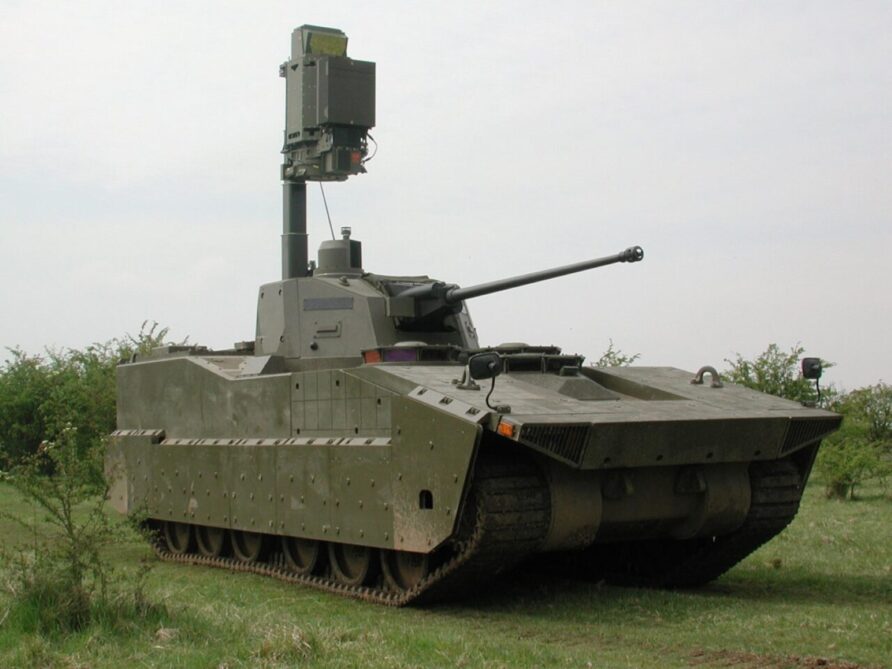
The hybrid electric drive system, band tracks from Soucy, and hydrogas in arm suspension and a high power to weight ratio provided both high speeds and cross-country manoeuvrability, but also limited silent capability over short distances (6-10k m). Lancer had a 600 km range and 0-50kph time of ten seconds.
SIKA Demonstrator
Approximately a week after the LANCER chassis was unveiled, the SIKA consortium also rolled out their demonstrator.
Unlike LANCER, SIKA opted for a more conventional powertrain, using an MTU 500hp diesel.
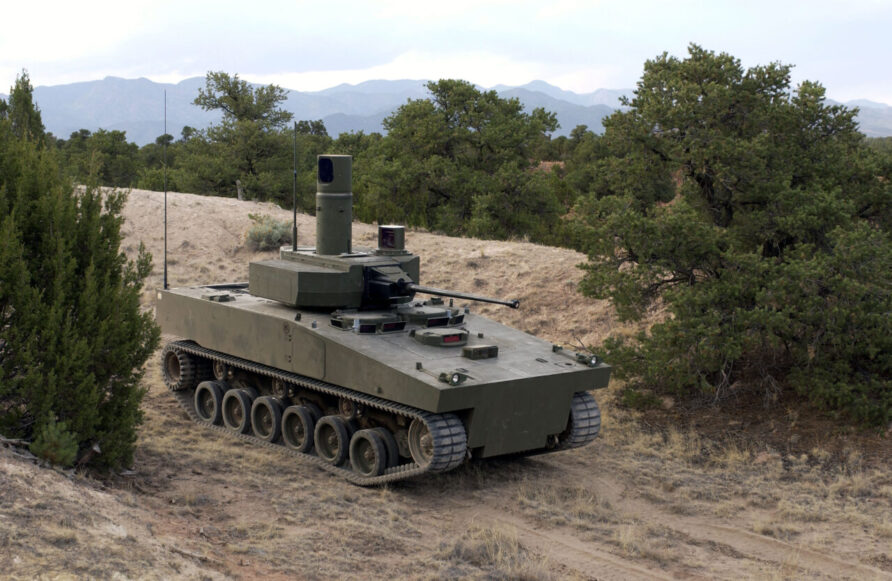
Like LANCER, SIKA also used an uncrewed turret with the 40 mm CTAS, continuous rubber tracks and an advanced sensor system that used a 3.5m elevating mast housing the 2nd generation FLIR (Comanche based) along with a downsized Longbow-derived radar with improved reliability and quality enhancements.
After TRACER
By summer of 2003, the initial FRES contract with Alvis had been terminated after the Investment Approvals Board decided not to approve the investment strategy. The Investment Approvals Board replaced the Equipment Approvals Committee in early 2002, perhaps they were still getting their feet under the table.
In June, Lockheed Martin and SIKA were awarded a $4.75 million contract from the US DoD to further mature the Reconnaissance, Surveillance, and Target Acquisition (RSTA) mission equipment from TRACER.
Some TRACER work was pulled through into the FCS project and during the early phase, the demonstrators proposed as an interim FCS solution.
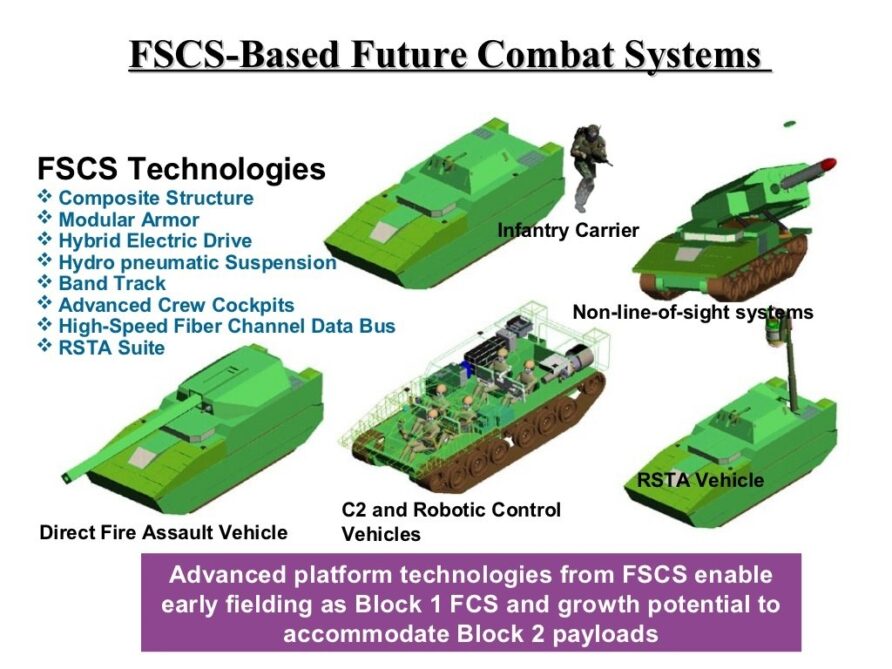
In 2005, the LANCER Consortium TRACER vehicle made a brief re-appearance in the UK to demonstrate the joint Horstmann and L3 Electronically Controlled Active Suspension System (ECASS).
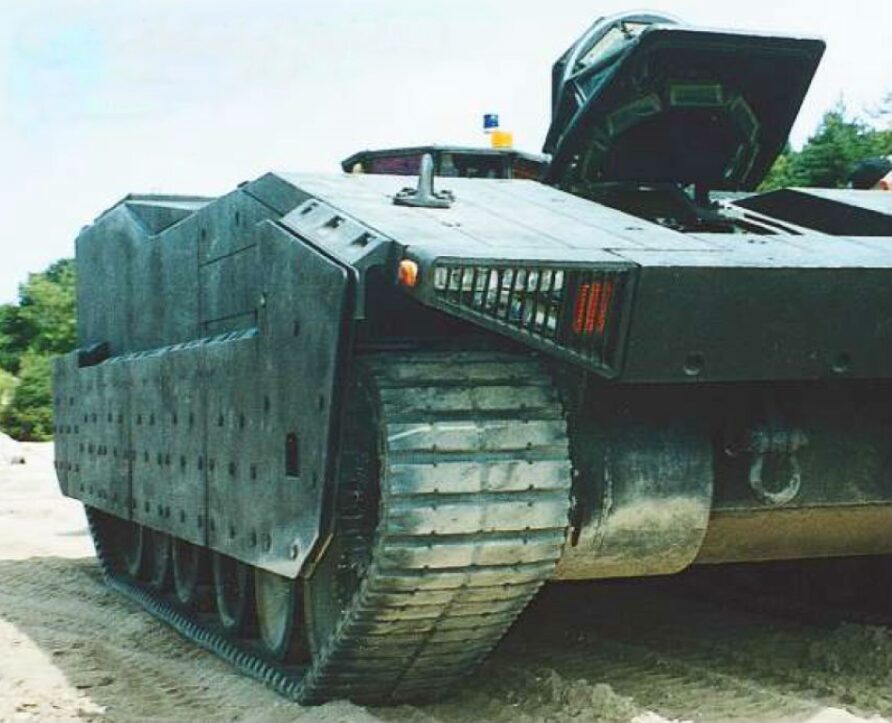
ECASS was an advanced development that smoothed bumps and controlled roll at speed using suspension actuators acted both as motors and generators, compensating by adding or removing energy.
Energy storage was handled by a combined battery/capacitor unit that also had the beneficial side effect of reducing the heat build-up normally associated with conventional shock absorbers and springs.
It was thought this technology would play some part in the FRES mobility demonstrator.
Thoughts on TRACER
They were only technology demonstrators of course, and many of the technologies were nowhere near mature enough for deployment, but they showed considerable promise and innovation.
TRACER provided a glimpse into the future, but although the vehicles were reportedly very impressive, the impression I get from reading what sparse materials are available on the subject is that the massive leaps forward were probably too much for a single programme to sustain.
Every aspect was a large advance; armour, propulsion, weapons, ergonomics and above all, the sensors and sensor fusion.
To illustrate the technology readiness issue, TRACER’s main gun, the 40 mm CTAS, was not ready for a manufacturing contract until 2015, eleven years after the expected TRACER in-service date.
Both were less than 20 tonnes and approximately 6.5m long, 2.7m wide and w.8m high, right at the edge of C-130 capacity.
Apart from technical ambition, if there was a fatal flaw in TRACER, it was C-130 carriage, a lesson that would also have to be relearned by what came next, FRES and FCS.
The UK spent 6 years and over £130m on TRACER, no lessons were learned.
We could have simply introduced Warrior Defence Reconnaissance Variant (DRV), we didn’t.


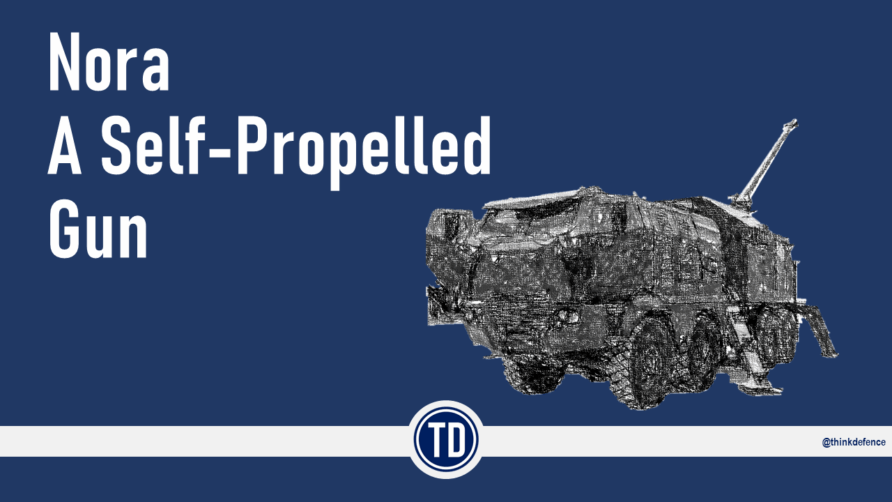
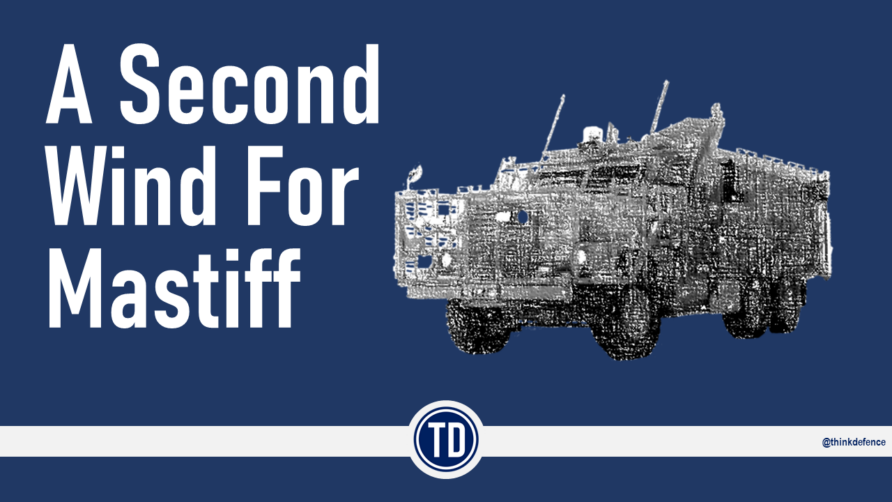
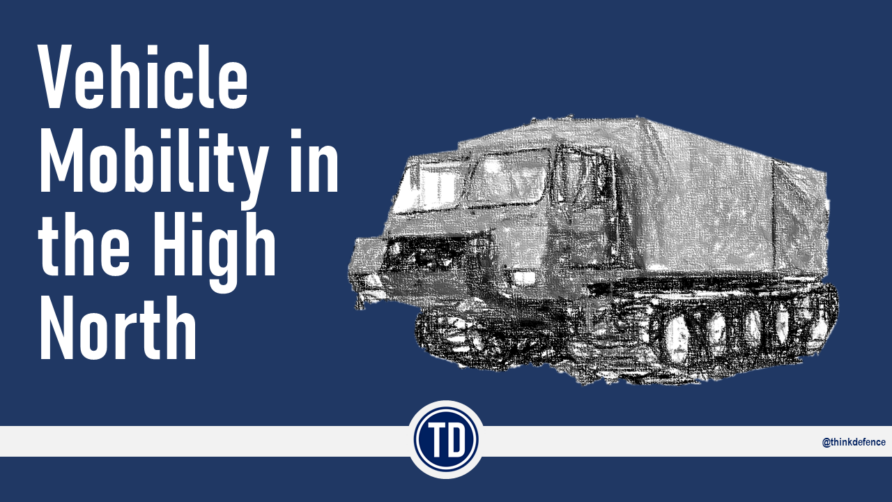
I worked on TRACER sensors, particularly the radar. However, I was quite familiar with other areas and with the procurement process, such as it was. I would certainly like to see the degree to which Ajax benefitted or not from the substantial work done by the two consortia. To my mind it was almost zero.
Ajax has no mast, no radar and thus no integrated suite of sensors and their integrated output. The thermal imager does not meet the TRACER specification, let alone that envisioned for FRES scout. The suspension would appear to be no better than that of FV 432, there is no hybrid electric drive or band track for almost silent movement into and out of action, the turret is not unmanned and it may not be capable of A400M transport.
I have strong views on Ajax as a capability for operating with Boxer; the "Strike" concept seemed to be so unfeasible that it appears to have been invented solely to justify the vehicle's existence. It is not a "scout", any more than an MBT is although that might be better as it's about the same size, is no less noisy and has sufficient firepower to engage any target including on the move.
I could say much more about the programme and its eventual cancellation but it's completely unlikely to be of interest now.
"but it's completely unlikely to be of interest now"
Not to me Alan, am fascinated by the history and want to document it all!
£130 million pounds of tax payers money spent and not a single vehicle to enter service. Meanwhile CVRT soldiers on! It's no wonder there are big holes in the defence budget and even bigger holes in our military capability. Bloody disgrace!
@ Alan Gray
I have known much of what you have said for a while. Do you think any of these systems will be chopped to save money?
For me it fails across the board. A large vehicle with a poor drivetrain with a pressure signature the same as a Challenger 2 MBT. There is a gap between the MBT (the fighting heavy end) and (what should be) the light small cavalry vehicle (reconnaissance). There is a need for a vehicle to carry out the cavalry functions.
ISTAR (Intelligence, Surveillance, Target Acquisition & Reconnaissance)
CBRN (Chemical, Biological, Radiological & Nuclear) Recce
Obstacle Recce
Route Recce
Patrolling
Scouting
Observation Post (OP) Screen
Close Target Reconnaissance (CTR)
Control Measure Security & Marking
Location Recce
Security/Protective
Screens
Advance & Rear Guard
Counter Recce
Deception
Anti-Airborne
Flank Protection
Rear Area & Supply Route Security
Exploitation
Raids
Pursuit
Seize & Hold
Recce Strike
Delaying Action
Secondary
Liaison
Traffic Regulation
Escort
Communications
Neither Jackal nor Ajax is suitable for all of those or optimum for any of them.
I see my comment has passed moderation so I will finish off.
Playing fantasy fleets first:
With the number of Chally hulls available we can only really have 2 full regiment of MBT. It doesn't sound many but it is only one less than we sent to fight Gulf War 1. One would humbly suggest two armoured brigades: 1 x reg MBT, 2 x armoured infantry, 1 x immediate fire support / overwatch reg (Spike NLOS, guided 120mm mortar systems, SPAAG)
Mount the rest of the not specialist infantry on wheels, so Boxer. Giver them cavalry regiment mounted in Boxer with 120mm gun, not a tank but. Plus 1 x immediate fire support / overwatch reg per brigade
Cavalry regiment for all those tasks listed above where a tank is too much and an MRAP not enough but not specialist recce. I will us CVx0 as the base vehicle. 3 squadrons (8 x CV9040, 4 x SPAAG), 1 x squadron CV90120, 1 x squadron for overwatch Spike NLOS, guided 120mm mortar.
Lastly specialist recce mounted in……….STORMER!!!! 4 x squadrons (3 troops of 3 x Stormer 30, 1 x Stormer Spartan for specialist equipment), 1 x specialist squadron for EW and drone support in Spartan (as many Spartan as needed), 1 x overwatch squadron (Spike NLOS, SPAAG).
I know it is a silly list that will never happen. But it the last paragraph for me that says it all. I just can't see what all that kit in Ajax is for and why what is necessary can't be shoved into something smaller. The Army has been networked from the days the first wireless set was taken into the field. Ajax is just too big. Somebody like JCB could have knocked out 250 Stormer hulls in about two years. The Army, RM, and RAF Reg could have found uses for more hulls plus exports. Honestly I cannot believe that anybody in the RAC thinks Ajax is the answer to any question.
This illustrates the problem. Ajax is the same size as the Leopard 1. But notice the chap and then look at the (famous) graphic showing CVR(T)'s size. Remember Soviet doctrine was for their (much smaller) MBT's to do the recce. My fear is Ajax is too large to be covert and too undergunned to fight its way out.
https://x.com/ArmoredWar/status/1714255437409771959
I will leave it alone now.
1. The problem lies in the comprehensive list of tasks which X has given. I defy anyone who thinks that everything can be covered optimally by a single vehicle (or fleet based on a single vehicle). Indeed, Panther was supposed to fill the command and liaison role – a separate vehicle for a separate requirement as, presumably, it was thought better to hive off those tasks from the rest because they could not reconcile the requirements in order to consolidate all of them in one. Tasks fall on a spectrum from one end with no or very little contact with the enemy to the opposite end with deliberate offensive action; traffic regulation to raids and counter-recce. I think that it's a pity that whoever was supposed to be leading the project didn't see what we see and decide to hive off more.
2. Then, there's the different types and levels of formation to consider – again, one spectrum from light, little or no armour to operating with heavily armoured divisional formations whilst another covers levels from armoured regiment and battalion to divisional formation reconnaissance – in old parlance close and formation armoured reconnaissance. In between lies a new capability of semi-strategic deployment by armoured, wheeled vehicles – Boxer, an almost unarmed APC, thought by the powers to be as a replacement for Warrior, a cannon armed IFV. We also have "Strike" to consider, whatever that is.
3. Ajax came from FRES Scout, supposedly to be informed by the experience of TRACER, as a replacement for the capabilities of CVR(T). I think that it's safe to say that precisely nothing of any significance developed in TRACER found its way into Ajax, as I have indicated before. No stealth features, an underperforming sensor system unable to detect potential enemy in poor weather and nothing special to improve the maintenance and logistic loads of a big, heavy, tracked vehicle fleet.
4. It is worth considering some of the obvious features of Ajax and then comparing the stated tasks with its probable capabilities in a few, probably typical operational scenarios;
a. It is not stealthy and even the best tactical handing will not mitigate that. Hence it is not a scout in the same way that CVR(T) is.
b. It is tracked and the infantry force with which it might work will be in Boxer wheeled vehicles. Wheels enable long range, fast self-deployment, presumably a key reason for their procurement along with the purchase of Archer, a towed 155mm artillery system which could support the wheeled force. Ajax is unlikely to be any better in this respect than MBTs and hence it is incompatible in this key capability. As for close recce, that of an armoured regiment might be compatible with Ajax but it must be considerably less so for an infantry battalion of any sort. That may necessitate another vehicle for recce anyway.
c. The 40mm CTA cannon will not defeat an MBT and, as yet, no overwatch capability is planned to be procured. This will make Ajax dependent on infantry-manned ATGW like Javelin, presumably carried in Ares and dismounted when needed, in direct contrast to the under-armour capability of Swingfire-armed Striker CVR(T). Compared with peer enemy vehicles, BMP 3 and now BMD 4, both of which can fire AT-10 Stabber missiles through their 100mm guns and earlier models which can fire AT-5 Spandrel missiles, all of which are probably effective against Ajax, Ajax is hence seriously under-armed and over-matched. The ability to fire on the move is, presumably, to enable the offensive tasks and not surveillance.
d. At even its minimum weight, Ajax is heavily armoured but not to the extent of a MBT. Its supposed enemy is probably able to call on MBTs in close support. As such, in the direct fire zone, its survivability is at least questionable. Its high weight will also limit its tactical movement in comparison to the ground pressure – less than that of a man’s foot, of CVR(T).
e. It has been said that Ajax is essential as it will be the Army’s “digital backbone”. I agree with X that this is arrant nonsense as any vehicle could be so fitted, just like successive ranges of radios. I cannot see what essential technical feature the vehicle provides to enable this capability and I don’t believe that there is one. The statement smacks of a completely illogical justification for the procurement of Ajax.
5. In conclusion, I cannot think of a role that Ajax would be successful in, except for, perhaps, “showing the flag” if it could be deployed to where it was needed. Hence, it begs the obvious questions of how did we get there and what will we do with it?
6. Ajax as it is today is far from being a success and very much not simply because its procurement has rightfully brought great criticism from Government oversight committees. Just as the Panther was procured to fill some of the roles, we need to reconsider what we need. In my opinion every attempt to make a single vehicle type meet a wide variety of requirements is always prone to failure. I thus suggest a mix, similar to the Ferret and Saladin, perhaps. We need a comparatively small, stealthy vehicle to carry out the scout role in both close and formation reconnaissance and a larger, well-protected and well-armed companion for formation counter-recce and other offensive roles. The former could be based on a new Stormer fitted with a comprehensive sensor suite on an elevatable mast and the latter on refitting Ajax with an effective gun – 105mm and even 120mm have been fitted to similar sized vehicles by other nations. Then, and at least in the hopefully near future, the Army will have the armoured reconnaissance it says it needs.
That’s it from me. Much more could be said but this is my take on the subject. The reader will see that what I have written might beg the question about what is actually required in terms of reconnaissance. I well remember being told not to consider UAVs when TRACER was being developed except for a micro system of limited capability. Perhaps the idea of systems other than the traditional armoured recce was an anathema to some groups within the Army; “you might very well think that; I couldn’t possibly comment”. If so, I hope that they like what they’re currently going to get and I hope that they can make it do whatever they find the job to be.
I have been looking at Saladin too. Something like 11.5 tons. Surely it is not beyond us to build a 20 tonner 6×6 with excellent mobility (with the transmission problems sorted) and better protection in a similar vein? A JCB Fastrac 8330 is 11.5 tonnes.
And I have been looking a new Russian tracked vehicle weighing in at 3.5 tonnes. No protection, but it is amphibious. Not quite a Universal Carrier but getting there.
I can see Ajax slowly stalling and being forgotten only a few squadrons being purchased before the Army suddenly deciding an armoured 4×4 and a couple of drones is the way to go.
I don't understand 'Strike' either.
Did and does anyone understand "strike"? Yet it's supposed to underpin future new formation equipment, capabilities and tactics and, as such, should be very clearly defined. Why isn't it?.
A couple more things I don't understand;
Why were the initial UK-only TRACER concepts so large and heavy? I know the arguments for making it lighter and smaller (FCS).
Why was CVR(T) found wanting to the extent that its 8 ton vehicle fleet is supposed to be required to be replaced by a 38-42 ton one?
I don't understand the orbat of 1st Deep Reconnaissance Strike Brigade Combat Team. It seems like everything we have thrown into one organisation that will invariably have to be broken up to deploy. I think the thinking on this stems back to the Gulf War where the artillery acted in effect as its own maneuver group. You don't need mass fires with precision systems. I would break it down into brigades for organizational simplicity. One brigade stood up. One in training or recovery. Local support fires for mechanised and armoured formations would better be provided by 120mm mortar mounted in appropriate platforms.
I am always troubled by the word 'deep'. In a doctrinal sense it is a measure not of distance but more in sense of importance. It just happens that important targets like theatre HQs just happen to be some distance from the front. So what exactly do they mean by deep? Targets just behind the enemy's front line? Is that really deep? Armies influence out to the range of their longest weapon. True depth probably means a missile strike which for the UK means an air strike. As for massed fires a battalion of 6in and a battalion of MLRS should be more than enough.
I can see the 'artillery brigade' needing what we once termed FRR. But to me that isn't cavalry. That is FOO. As I said above there is a need for cavalry regiments.
https://pbs.twimg.com/media/FpF1NkOWAAAHaMP?format=jpg&name=4096×4096
https://www.defense-aerospace.com/wp-content/uploads/2022/10/216182_1.jpg
PS: I would say the third element of an artillery brigade would be some AA formation.
PPS: I will also add a fan of the old US Army cavalry regiment orbat which featured dismounts in numbers.